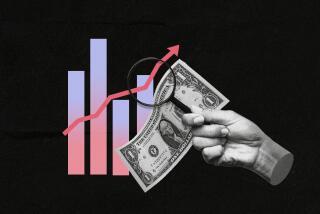Column: Another way the rich get richer: Study shows a widening gap in life expectancy between rich and poor

- Share via
The United States can take pride in one indisputable marker of racial equality: The gap in life expectancy between the white and black populations has narrowed over time. What was a disparity of more than eight years for Americans born in 1950 has closed to just over three years for those born in 2014, according to actuarial estimates.
But let’s not pat ourselves on the back. A different disparity has opened up: The gap in life expectancy between wealthy and low-income Americans is wide and growing wider. And that has implications not only for lifetime health and wealth, but for Social Security.
As a new study from the Congressional Research Service shows, this gap is making Social Security less progressive. Originally designed to benefit low-income workers more than their wealthy peers, the program is now paying the rich more than the poor.
Proposals that increase the retirement age will tend to skew Social Security benefits toward higher earners.
— Congressional Research Service
The CRS assembled a series of studies dating back to 2007, using data going as far back as the birth cohort of 1912. Its conclusion is that higher earners, with their gains in life expectancy, “can expect to collect Social Security benefits over increasingly longer periods of time than the lowest-earning groups, who have experienced little to no gains in additional years lived.”
That tells us, among other things, that one of the most oft-proposed nostrums for “fixing” Social Security’s fiscal problem — raising the retirement age — translates into a benefit cut, disproportionately hurting the middle class and the poor. The National Academy of Sciences calculated in 2015 that raising the official retirement age to 70 (it’s 66 for those born in 1943-54) would reduce the benefits of those in the lowest fifth of income earners by 25%, but only 20% for those in the top fifth of the income ladder.
What’s happened is that longevity for those in the bottom 20% has stagnated or even moved backward, while it has soared for those at the top. The National Academy calculated that for those born in 1930, males in the bottom 20% who reached age 50 had a life expectancy of 76.6; those with the same characteristics born in 1960 could expect to live only to 76.1. Among the top 20% of income earners, males born in 1930 could expect to live to 81.7, while those born in 1960 could expect to live to 88.8. In other words, a longevity gap of just over five years between rich and poor born in 1930 widened to nearly 13 years for those born in 1960. A similar pattern can be found among women.
What does that have to do with Social Security? The program is structured to give lower-income workers a higher share of their career incomes in retirement than wealthier workers get, a measure known as the replacement rate.
That progressivity in benefits is important because the payroll tax, which funds the program, is highly regressive. It’s charged only on the first $127,200 of wage income (that’s for this year — the figure rises with inflation), so the higher one’s income and the greater the proportion of unearned income such as investment gains, the lower the proportional tax bite. Therefore, the higher replacement rate for lower-income workers makes up, somewhat, for their higher payroll tax.
But the widening gap in life expectancy throws that balance out of whack. Leaving aside the shame of a national economy that finds ever so many ways to increase inequality between rich and poor, the CRS observes that “policy proposals that increase the retirement age will tend to skew Social Security benefits toward higher earners.” That’s exactly the opposite of what national policy should be aiming for.
Wealthier workers have other advantages that skew the balance of benefits. They’re able to delay claiming Social Security longer than low-income workers, and thus are able to capture the higher monthly benefit paid to those who delay taking Social Security until as late as age 70. They’re under less pressure to take benefits early (they can be claimed as early as age 62), which carries a monthly reduction.
The premium for waiting to claim benefits and the deduction for early retirement are supposed to be actuarially neutral — that is, they’re supposed to result in roughly the same lifetime benefits on average. But since wealthier workers are living much longer, the actuarial equivalence no longer applies as well as it once did.
The disparity is showing up in lifetime Social Security benefits. the National Academy calculated that lifetime benefits for top-income males increased on average to $295,000 (in 2009 dollars) for those born in 1960 from $229,000 for the 1930 birth cohort. For those in the lowest 20% of earners, lifetime benefits actually decreased — to $122,000 for the 1960 cohort from $126,000 for those born in 1930. The trend held all along the income ladder.
These figures explain why proposals to raise the retirement age tend to come from well-paid policy wonks comfortably seated behind desks in Washington think tanks, or from members of Congress assured of a decent government pension after they’re turfed out. From that vantage point, all Social Security recipients look like them and their colleagues.
But the disparities are glaring. The racial gap in longevity, while narrowing, still hasn’t closed. The income gap is growing. Raising the retirement age is a stealth benefit cut and always has been. Now there’s more evidence that it’s just another way to make the rich richer.
Keep up to date with Michael Hiltzik. Follow @hiltzikm on Twitter, see his Facebook page, or email michael.hiltzik@latimes.com.
Return to Michael Hiltzik’s blog.







